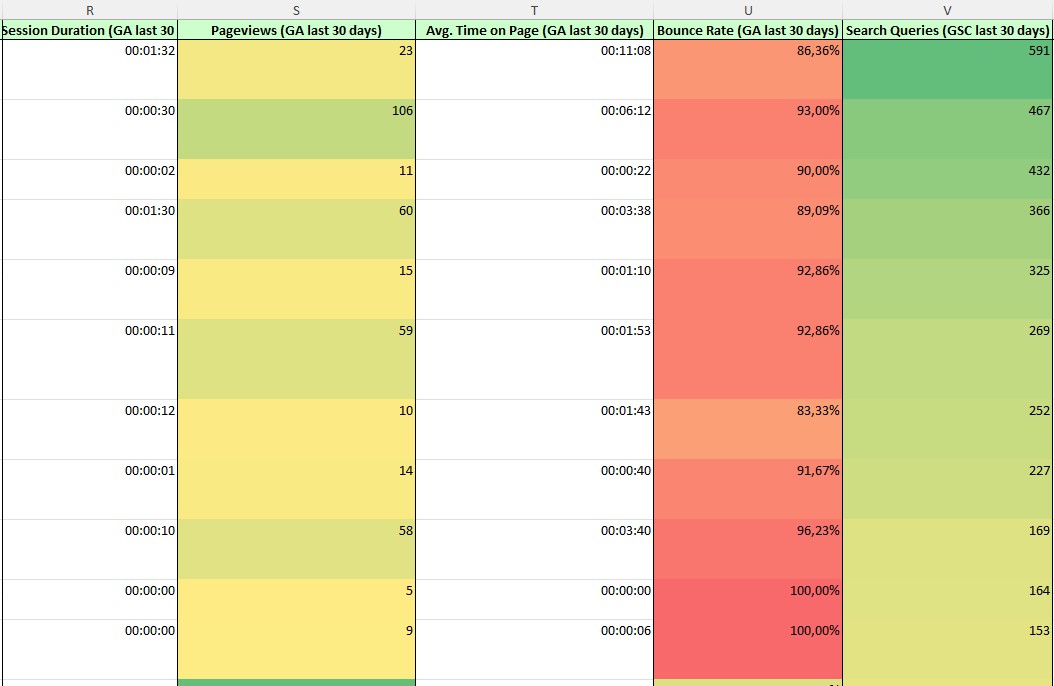An introduction to content audit (content analysis)
An all-purpose tool for content marketing professionals. I’ll explain everything you need to know about content auditing in 5 steps.
Share article!

Author: Marc Heiss
Position: Management
Updated: 13.01.2023
What is a content audit?
A content audit is a method of reviewing and optimizing existing content on a website.
It helps to assess the quality of the content, identify which content is working well and which needs to be improved. A regular content audit can help improve search engine optimization (SEO) and user experience as well as better target the audience.
Here are five steps that should be taken during a content audit:
1. define goals
The first step in a content audit is to set clearly defined goals. The following objectives could be used for this purpose.
Examples for goals
- Improvement of SEO accesses
- Increase in interactions (time on page, etc.)
- Conversion rate increase
- Increase the visibility of your own domain
After goals are established, relevant metrics should be selected to measure success.
Metrics examples
- Access numbers (clicks from Google Search Console)
- Positions won
- Backlinks
- User behavior (time on page)
These metrics can be used to determine the popularity of specific topics, check SEO performance, and determine the effectiveness of content at various stages of the buying process.
2. define relevant URLs
To take an inventory of your content, it is important that you first collect all the URLs that you want to analyze.
If you do not have an XML sitemap, it is recommended that you use a sitemap generator tool to create one for your website. A sitemap is not only useful during a content audit, but it also makes it easier for search engines to understand your website structure and find all the important pages.
Once you’ve collected your URLs, you can use an online tool or Excel spreadsheet to sort them by various criteria such as Buyer’s Journey stage, content type, word count, publish date, directory, and author to track with your team.
It’s also useful to collect metadata such as titles, meta descriptions, and H1 headings for each piece of content so you can review and update all metadata in one place. Finally, you should create columns for the metrics you collect for each page. (Clicks from Search Console, data from Google Analytics, etc.)
Helpful tools for quickly collecting all URLs is Screaming Frog or Google Search Console.

3. analyze your URLs
After you have collected all relevant URLS in a table, these should now be expanded with important data from your marketing tools.
Ideally, enrich your table with data from Google Analytics, Google Search Console & an SEO tool like SEMRush (backlinks, number of words etc.)
The output should be a table where you can sort content based on their clicks from search engines, backlinks and other metrics.
Tip: To make this possible, you need to export data from your data sources (Search Console, Analytics ec.) and map them to your sitemap URLs using Excel and a SVERWEIS function.

4. evaluate your data
To be successful, clearly defined goals should be set in advance.
To get a clear picture of the current state of your content, metrics should be examined in their entirety.
If traffic is high but bounce rate and session duration are low, it may mean that the content is not relevant.
It is important to consider the different stages of the Buyer’s Journey and evaluate each piece of content based on the data and metrics collected.
Ideally, you add a column in your table where you add the status of the content pages.
-
Rewrite or remove articles without relevant accesses.
-
Update pages which are important but still generate too few hits.
5. create a plan of action
After you have created your priority list, you should create an action plan for each piece of content. Here are some tips that you can implement directly:
- Reuse existing content by combining it or publishing it in a different format.
- Rewrite underperforming blog posts by updating them with new examples, tips, and practical information.
- Enhance existing content by adding more details.
- Structure your content with H2 and H3 tags to help users and bots better interpret your content and increase your traffic.
- Update your CTAs to improve your conversion rates.
- Add videos and images to make your content more engaging and generate more traffic.
- Optimize your metadata by customizing titles, meta descriptions and H1 headings.
- Optimize internal linking by adding links to new articles in related blog posts.
Closing words
A content audit (content analysis) should be a fixed part of the SEO strategy for every company. This ensures the long-term success of the content and the creation of it, and at the same time ensures a constant look at the performance of Google search.
Questions and answers
A content audit is a method of evaluating the quality and effectiveness of content on a website or online channel to determine what content should be optimized, updated, or removed.
A content audit helps review content performance against business goals, better understand the target audience, improve SEO performance, and optimize user experience.
There are several tools like SEMrush Content Audit, Ahrefs Content Explorer or DeepCrawl that help to collect, categorize content and analyze metrics.





Kommentare